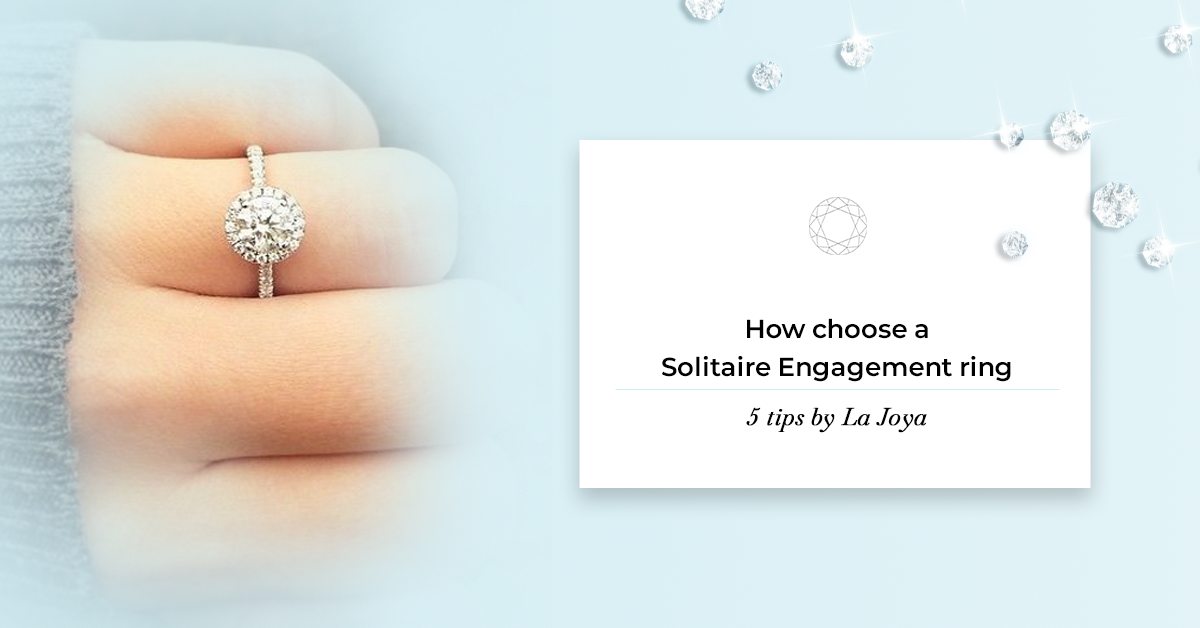
Solitaire engagement rings have been the couple’s favorite for years now. The symbolic meaning of the solitaire diamond, along with its elegant visual appeal, makes it a timeless choice for an engagement ring.
Looking for a diamond solitaire engagement ring to woo your partner but confused about how to pick the perfect one? We have got you covered!
Dive in to unlock the thoughtfully curated handpicked tips for you!
Table of Contents
Examine the Popular 4Cs of a Diamond Solitaire Engagement Ring
Consider the Perfect Diamond Shape and Style for Your Solitaire Engagement Ring
Choose the Perfect Diamond Setting that Suits Your Requirement
Decide on a Quintessential Metal for the Ring Band
Make Sure You Opt for the Perfect Ring Size
Summing Up
FAQs about Solitaire Engagement Ring
Solitaire engagement rings are a symbol of lifelong commitment and love. Here are some tips to consider when making your decision.
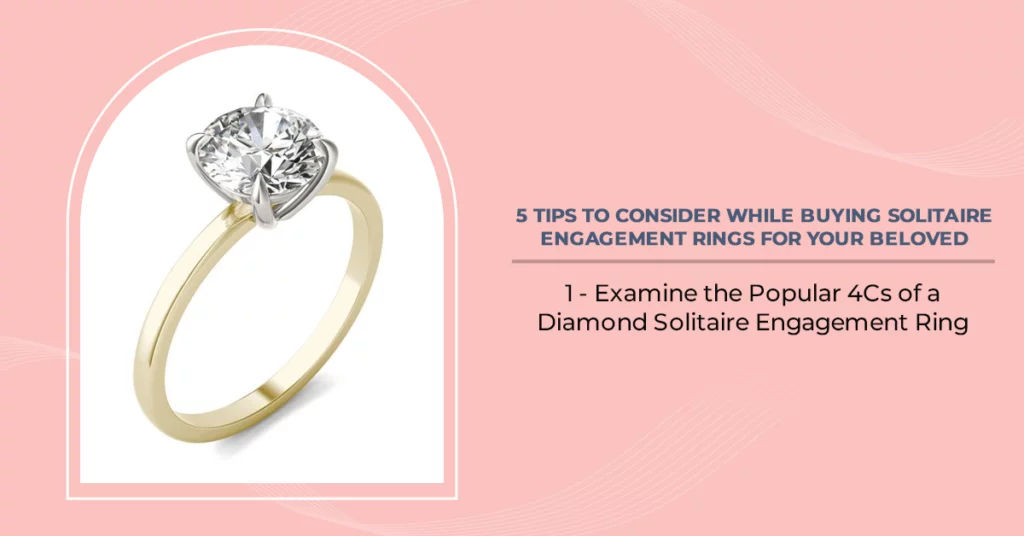
The commonly recognized standard features of a diamond that indicate its quality and worth are its cut, color, clarity, and carat. While all the “Cs” matter, cut is the factor that affects a diamond’s brilliance and shine the most. When searching for a diamond solitaire engagement ring, striking the ideal balance among these four Cs can help you find its elegance and value.
The four Cs are as follows:
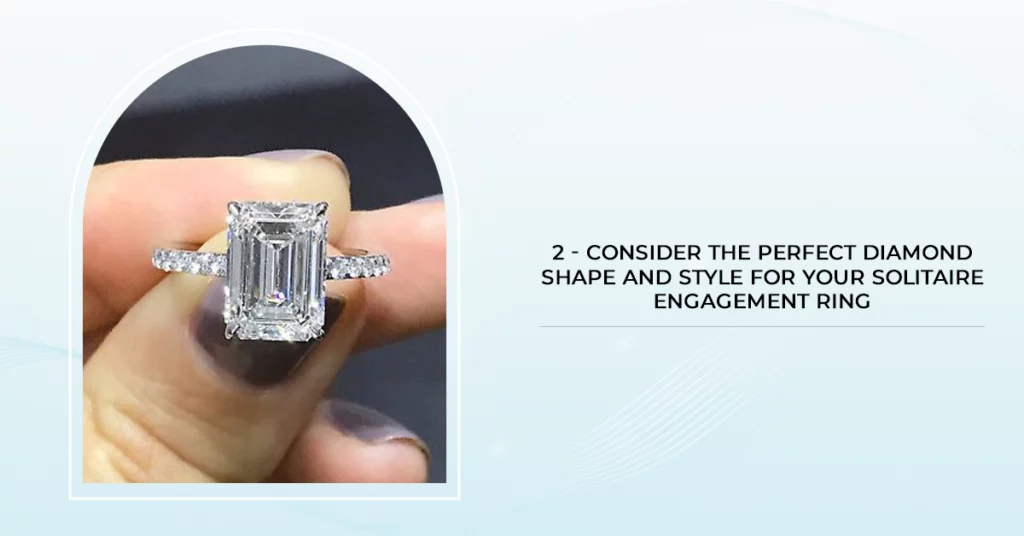
Make yourself familiar with the differences between a diamond’s shape and cutting style before looking for an engagement ring. Shape describes the contours of a facing-up diamond. The round diamond shape is quite popular. However, other shapes like marquise, pears, hearts, ovals, rectangles, and squares are winning hearts, too.
PRO TIP: Of all the shapes and cut types, round brilliant diamonds usually have the highest price tag. Selecting an elaborate design might be a cost-effective method of choosing a one-of-a-kind center stone.
The arrangement of a diamond’s facets is known as its cutting style. The brilliant cut is well-liked because it enhances a diamond’s brilliance. A variety of forms, including circular, oval, square (princess cut), and marquise, can have this cut style. The round brilliant cut is by far the most common pair of shapes and cuts.
PRO TIP: Brilliant cuts are more effective at disguising color and inclusions, whereas step cuts tend to display their color and clarity more. When investing in a step cut, consider upgrading the color and clarity.
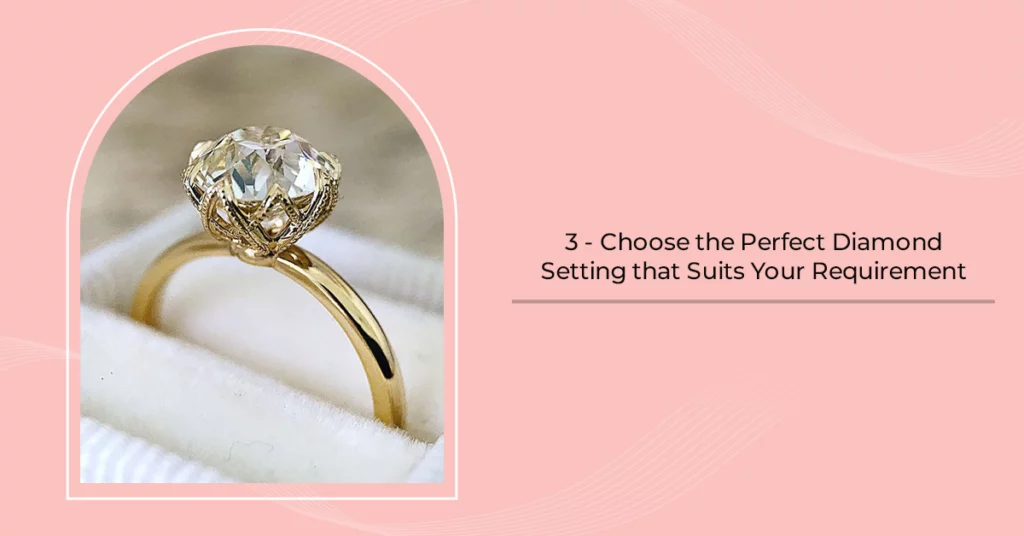
Diamonds are held in a fixated position in a solitaire ring in different types of settings, which adds to their visual appeal. When looking for a perfect diamond solitaire engagement ring, you can consider the following three major types of diamond settings:
The most widely used configurations are prong setups where the diamond is held in position by tiny “claws” called prongs. The prongs stretch from the ring’s base and are joined to the band. The diamond is held in place by the clasp formed by these slightly arched points.
Four or six prongs are the best suited for a round solitaire engagement ring. If you want to opt for the classic engagement ring solitaire with the Tiffany setting, six prongs are the ideal choice.
A prong setting’s primary advantage is the diamond’s remarkable light reflection. Prong settings are, therefore, all-time favorites for solitaire diamond rings. Prong settings also have the advantage of being reasonably simple to maintain on your own.
Prongs may bend, twist, or become loose. They may snag on hair or garments, potentially causing some damage, particularly if a prong becomes loose in time. Four-prong rings have a higher chance of losing a diamond due to a loose prong than six-clawed bands.
One of the safest settings for solitaire engagement rings is the bezel setting. In this design, the diamond is anchored by a thin metal strip that is pounded or forced around it, which means it cannot be seen from the side, and all corners are secured. It is a great option for marquise cut and princess cut solitaire engagement rings that have sharp points and are prone to chipping.
Among all solitaire diamond engagement rings, a bezel setting is arguably the safest since the metal encircles the stone. You have a lower chance of losing your diamond. Additionally, there is less chance of the diamond being damaged. The diamond appears larger than it could be in other settings, which is another benefit.
In a prong setting, you can see more of the diamond than in a bezel setting. There is a smaller amount of light for the diamond to reflect since the metal ring covers a larger portion of it.
Unlike prongs or bezels, tension settings use pressure to keep the diamond in position. There is an aperture in this ring design that can accommodate a diamond. The diamond is under strain from the opening’s left and right ends. Tapered pits that fit snugly around the diamond’s girdle are embedded in the metal on each side.
If you are looking for a sleek, minimal engagement ring, this setting is ideal for you. The tension setting lends the ring a contemporary appearance with a classic flair.
This setting makes the diamond radiate more light and brilliance. Tension equips the designers to try creative designs. You can find the most unique solitaire engagement rings with this setting.
In comparison to other settings, tension rings are hard to resize. Hence, this setting can be opted only when you are very sure about the size.
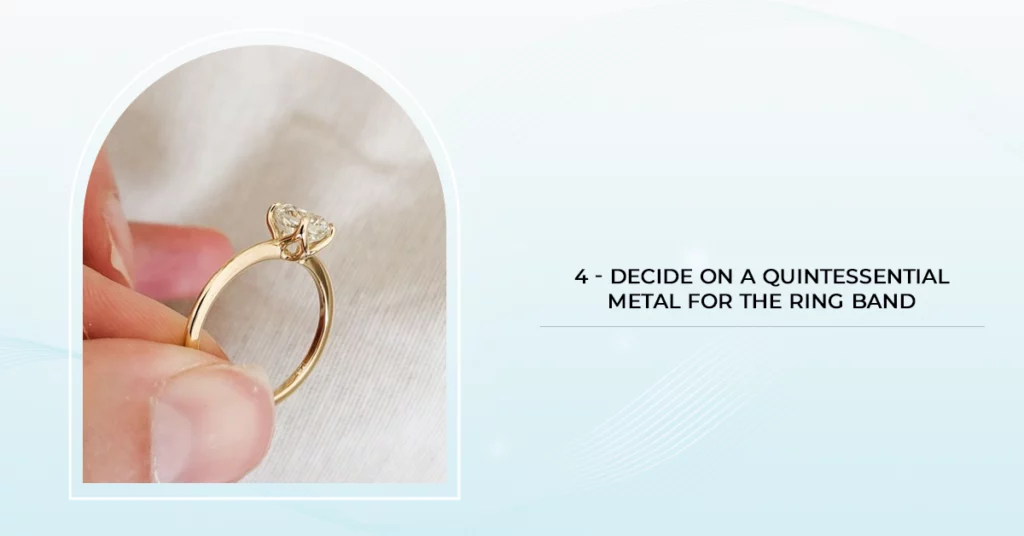
The color of the metal band is an essential aspect you need to consider while purchasing a solitaire diamond engagement ring, as it affects the shine of the diamond and the overall look of the ring.
Here are the popular metal types you can consider for your diamond solitaire engagement ring:
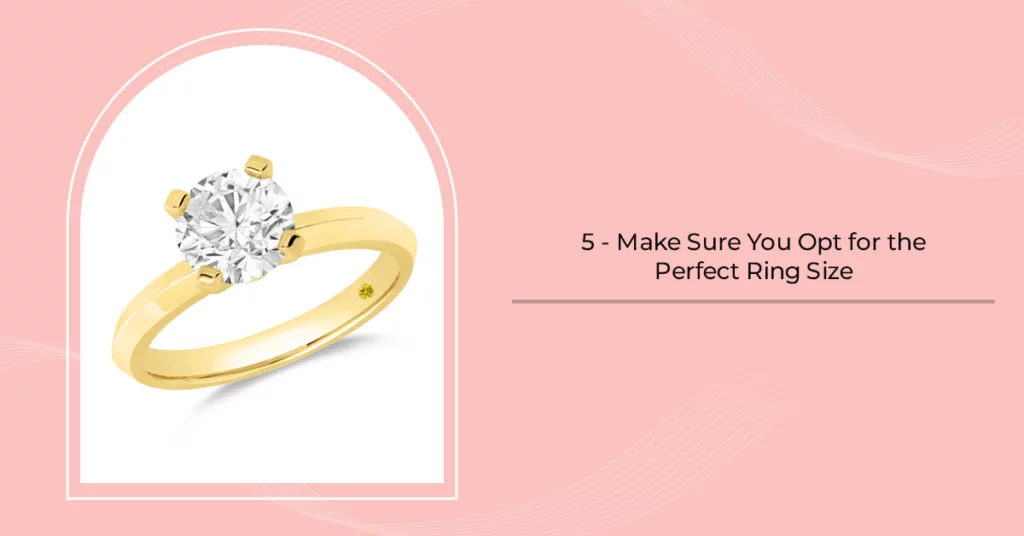
Engagement rings are special due to the emotional value attached to them. And getting the size right is necessary! You can measure the wearer’s ring size after selecting the diamond and ring style. A ring sizer—a set of metal or plastic rings you try on in various sizes—is the most effective way to accomplish this.
In case you need a step-by-step guide for measuring your accurate ring size, head on to La Joya’s Ring size guide for some inspiration.
From sleek round solitaires to vintage solitaire engagement rings, there is a wide range of exotic choices you can opt for. Apart from the abovementioned aspects, you can consider the grading quality, motifs, and the latest trends while purchasing the ring.
To discover more trending styles, designs, and patterns at attractive prices, check out our exquisite collection of solitaire engagement rings at La Joya.
An engagement ring with a single center gemstone is called a solitaire. The band is usually basic and devoid of studded diamonds, and there are no additional diamonds or gemstones on the ring.
The benefit of a solitaire design ring is that, because of its simplicity and adaptability, it pairs well with many different diamond shapes.
Yes, it is safe to wear your diamond solitaire engagement ring every day. However, you should avoid using it while doing rough work like gardening, gyming, etc.
For couples, solitaire engagement rings have great significance. The lone diamond at the ring’s core stands for strength and integrity, as well as the couple’s love, devotion, and loyalty.
The term “solitaire” refers to the design of an engagement ring rather than the kind of diamond. A single center diamond is the focal point of a solitaire engagement ring. This style has numerous variations, like diamonds of varying sizes or shapes.
Shop by metal
Shop by diamond
@ All rights reserved La Joya Jewelry Inc